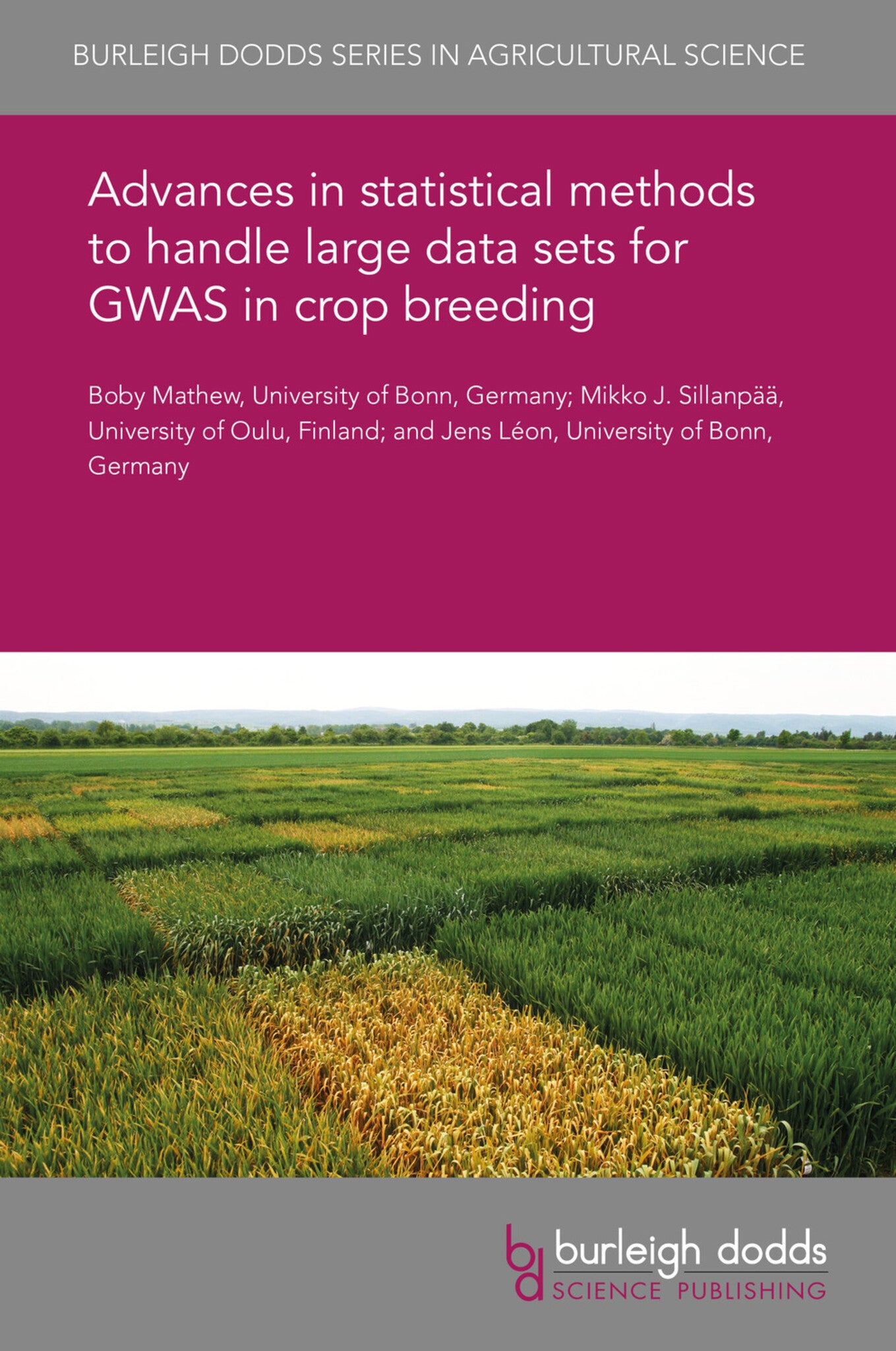We're sorry. An error has occurred
Please cancel or retry.
Advances in statistical methods to handle large data sets for GWAS in crop breeding
Regular price
£25.00
Sale price
£25.00
Regular price
£0.00
Unit price
/
per
Sale
Sold out
Re-stocking soon
One of the most important statistical methods of handling large data sets for genome-wide association mapping (GWAS) is quantitative trait loci (QTL) analysis. Two approaches to QTL analysis are li...
Read More

Some error occured while loading the Quick View. Please close the Quick View and try reloading the page.
Couldn't load pickup availability
- Format:
-
27 June 2019

One of the most important statistical methods of handling large data sets for genome-wide association mapping (GWAS) is quantitative trait loci (QTL) analysis. Two approaches to QTL analysis are linkage analysis (LA) and linkage disequilibrium (LD) mapping. Even though association and linkage mapping are viewed as fundamentally different approaches, both methods try to make use of recombination events. This chapter discusses some of the main challenges for GWAS studies with large data sets. This chapter describes both single-locus and multilocus association models, before going on to discuss high dimensional data space in GWAS, the significance threshold for association, and dimensionality reduction methods. Finally, the chapter looks ahead to future trends in this field.

Price: £25.00
Publisher: Burleigh Dodds Science Publishing
Imprint: Burleigh Dodds Science Publishing
Series: Burleigh Dodds Series in Agricultural Science
Publication Date:
27 June 2019
ISBN: 9781838798345
Format: eBook
BISACs:
TECHNOLOGY & ENGINEERING / Agriculture / Sustainable Agriculture, Agronomy and crop production, TECHNOLOGY & ENGINEERING / Agriculture / Agronomy / Crop Science, Sustainable agriculture

1 Introduction 2 Single-locus association model 3 Multilocus association model 4 High-dimensional data in GWAS 5 Significance threshold for association 6 Dimensionality reduction methods 7 Conclusion and future trends 8 Where to look for further information 9 References



